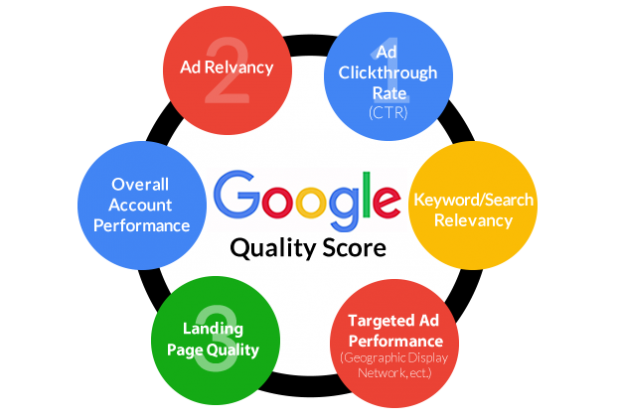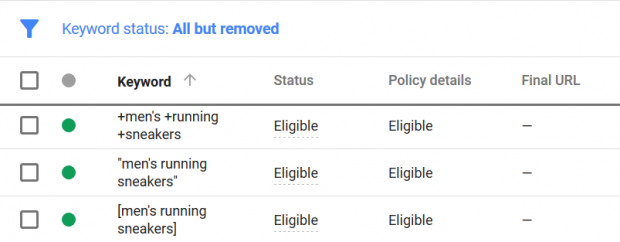Quick question:
Who, among your potential customer base, do you typically target with your PPC ad campaigns?
If your answer was something along the lines of “new leads” or “top-of-funnel consumers,” you’re not alone.
It’s pretty common for companies to use PPC ads solely as a means of attracting new customers and then move on to other means (e.g., landing pages, supplemental content) to keep these individuals engaged and moving through the sales funnel.
The problem with this approach is twofold:
For one thing, it works under the assumption that top-of-funnel (ToFu) individuals are the only people who use search engines to inform their purchasing decisions. In other words, it neglects the fact that middle-of-funnel (MoFu) consumers, as well as those who are close to converting, still use search engines along their journey (as opposed to, say, navigating directly to a specific website).
Furthermore, this approach makes it so that the same ad (focused mainly on ToFu customers) is displayed to all searchers – regardless of their knowledge of your brand and products. Unfortunately, this means those who are already aware of what you have to offer are still being pointed toward top-of-funnel landing pages and content. Not only will this likely turn MoFu and Bottom-of-funnel (BoFu) customers off entirely, but it also means you’re wasting impressions and clicks that could be better utilized elsewhere.
To get the most out of your PPC initiatives, you’ll want to begin developing multiple campaigns that focus on catering to the needs and expectations of individuals that exist within each stage of the sales funnel. Though this will require you to increase your investment into your PPC initiatives, doing so will ultimately increase the effectiveness of your Google Ads campaigns. This increased effectiveness will make the increased investment completely worth your while.
In this article, we’ll go over some of the most effective and efficient ways to make this happen.
Focus on Funnel Stage-Specific Keywords
The first thing to recognize is that consumers at different stages of the sales funnel don’t typically use the same phrases when conducting searches. Rather, they use terms that relate in some way to their overall purpose for conducting the search in the first place. In fact, the terms a specific individual uses when conducting a search will often tell you what stage of the sales funnel they’re currently in.
Let’s say we have three customers, one at each stage of the sales funnel, who are all searching for information relating to men’s running sneakers.
The ToFu customer, who is just beginning their search for new sneakers, will likely use broad search terms (e.g., “running sneakers,” “men’s running sneakers,” etc.). Basically, this individual is looking to see what features they should be looking for in a running sneaker, and is ready to begin considering their options.
The MoFu customer knows what they’re looking for in a running sneaker, and will begin to narrow down their search using certain qualifying terms. For example, they might search for “durable men’s running sneakers,” or “comfortable men’s running sneakers.”
Finally, the BoFu customer will be looking to actually make a purchase, and will use search terms including words like “buy,” “purchase,” etc. They also might include model- or brand-specific terms, as well (e.g., “buy Nike men’s running sneakers,” or “buy Nike Men’s Downshifter 7 Running Shoes”).
(Quick note: Of course, the above are merely examples – you’ll need to dig into your own data to determine which terms are typically used by your own customers at different stages of the funnel.)
All this said, you’ll want to create individual ad campaigns to be displayed to consumers who use keywords that are indicative of the funnel stage they’re currently in. In doing so, you’ll be able to attract and nurture newcomers and those who may be further along in their own buyer’s journey but haven’t yet become aware of your brand using separate PPC campaigns. Additionally, creating funnel-specific campaigns will also allow you to point specific customers toward specific landing pages, as well.
As we alluded to earlier, your goal is to showcase content and information that’s ultra-relevant to the needs and expectations of the specific customer in question – in turn getting them to engage further with your brand.
Create Ad Groups Focused on a Single Keyword
Along with creating funnel-specific Google Ads campaigns, you’ll also want to lean toward creating ad groups that focus on a single keyword, only.
Looking at it from a different perspective, you want to avoid creating a single ad that’s triggered by multiple keywords. Using our “men’s running sneakers” example, you wouldn’t want to have the same ad show for searches for “men’s running shoes,” “men’s sneakers,” or anything other such term – no matter how closely related the term is.
There are a few reasons for this:
For one thing, Google determines the Quality Score of your campaigns based on, among a few other factors, the relevance of your ad copy and attached keywords to the actual product being showcased. So, if your product title and ad copy includes the phrase “men’s running sneakers,” using keywords including the word “shoes” instead of “sneakers” might cause your Quality Score to drop.
On the human side of things, using the one-keyword-per-ad-group approach simply provides a sense of consistency and continuity for those who view your ads. For example, those who search for “men’s running sneakers” will be presented with an ad using that specific phrase; similarly, those who search for “men’s running shoes” will be presented with an ad using that specific phrase.
(The same product, of course, is being presented – it’s just that the ad copy will be tweaked to align with the language being used by the individual searcher.)
One other thing to consider is that using this approach will ultimately minimize the chances of a given ad being presented when searchers use a less-effective or less-relevant keyword. For example, if an individual searches for “men’s sneakers,” they might really be looking for basketball sneakers or tennis shoes – not running sneakers.
Unfortunately, if your ad is set to appear for those who use the search term “men’s sneakers,” you’re going to end up presenting your ad to individuals who have little desire to check your product out. This, in turn, will cost your company money in the form of wasted impressions – and even possible mis-clicks.
Now, when you create your single-keyword ad groups, you’ll want to include three versions of the keyword phrase, using modifiers as applicable:
- Broad Match: Men’s running sneakers
- Phrase Match: “Men’s running sneakers”
- Exact Match: [Men’s running sneakers]
Using this framework, you’d want to set your bid highest for exact match searches, and lower your bid for broad match searches. This will maximize your chances of having your ad be presented when individuals use the specific keyword phrase – but still give you a chance of getting your ad seen by broad searches, as well.
Assign Negative Keywords to Campaigns for Each Stage
Along with being more specific with your keyword focus, you also want to take care to ensure that your ads aren’t showing up for irrelevant or ineffective keywords, as well.
Irrelevant keywords, as we spoke about earlier, are those which either don’t relate to the product in question, or that are related, but are still a bit “off the mark.” For example, “men’s basketball sneakers” would be a negative keyword for a campaign focused on “men’s running sneakers.”
Ineffective keywords are phrases used by individuals who have little to no intention of making a purchase. One of the most common negative keywords of the ineffective variety are searches with the word “free” in them (e.g., “free men’s running sneakers). Obviously, anyone using this term will have no interest in opening their wallet for you.
While a negative keyword strategy is essential for all PPC campaigns, let’s focus on how to implement such a strategy when focusing on aligning your Google Ads campaigns with your sales funnel.
One way of defining negative keywords is to consider all of the ads you have running for a given product (or for similar products, if applicable). As we touched on earlier, you might have two ads running for the same product, using a slight variation in keyword phrase (e.g., one for “men’s running sneakers,” and one for “men’s running shoes”).
In such an instance, the keyword phrase used for “Campaign A” would be a negative keyword phrase for “Campaign B.” Basically, this ensures that the multiple campaigns you have running for the same product don’t compete with one another – and, again, would also ensure consistency from search term to ad copy.
Another way to define negative keywords is to look at the specific keyword phrases you’re using to target individuals at different stages of the sales funnel. Again, you don’t want these campaigns to compete with one another – and you want to be sure that the right ad is displayed to the right person.
So, for example, “buy men’s running sneakers” would be a negative keyword for your top-of-funnel ad campaign, since you only want the ad that goes with this phrase to be displayed to bottom-of-funnel consumers. Conversely, the broad phrase “men’s running sneakers” would be a negative keyword for BoFu searchers, since the ad copy would likely be targeting your top-of-funnel customers (and is therefore irrelevant to BoFu searchers).
Once more, in addition to aiming for relevance of ad and landing page copy, defining negative keywords also minimizes the potential of wasting impressions and/or clicks on those who most likely won’t engage further with a given ad in the first place.
Wrapping Up
To reiterate once more:
PPC ads can absolutely be used to engage further with with customers existing at all stages of the sales funnel – not just at the top.
While you certainly want to ensure that you have other content and initiatives in place to cater to the needs and expectations of those at each funnel stage, you don’t want to overlook the impact a well-placed and well-timed PPC ad can have on those further along in their own personal buyer’s journey.
Image Credits:
Feature Image: Unsplash/Xiang Hu
Image 1: via Medium
Image 2: Screenshot by author. Taken July 2018 from Google Ads.
Image 3: via Sales and Orders






